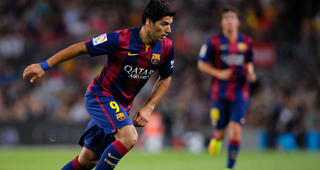If you interpret sports as a metaphor for moral battles played out on a field, then Barcelona’s 2-0 win against Manchester United in the 2009 Champions League was a vindication of doing things the right way. Their lineup featured seven players developed from their famed youth academy, and their cohesion, the story goes, was the deciding factor in their dominant run in the following years. There were leaders Carles Puyol and Victor Valdés, along with Gerard Piqué on the backline. The midfield trio of Sergio Busquets, Andres Iniesta and Xavi was the most dominant that season. Lionel Messi scored the second goal. The spine of the lineup had literally grown up together, and conquered Europe.
Another interpretation puts the spotlight on the side’s attacking trio of Thierry Henry, Samuel Eto’o and Messi, who combined for 100 goals that season. Eto’o and Henry cost the club $60 million. Barcelona spent over $50 million on Zlatan Ibrahimović during the following summer.
Barcelona’s acquisition of Luis Suárez this past summer follows a trend, as did the controversial Neymar signing the previous summer. Surely, somewhere in the vaunted youth academy, there’d be a brilliant 20 or 30 goal a year striker, another Messi. Yet Pedro never gained a foothold in the starting side. Isaac Cuenca plays for Deportivo La Coruna. And previous “Next Messi” Bojan Krkic is at Stoke.
Brazilian journalist Tim Vickery is quick to remind us that for all of Barcelona’s in house midfield brilliance, the youth academy has struggled to produce strikers who can produce a moment of magic. The side have always purchased this player in transfer markets, and in a larger trend of European soccer, have increasingly looked towards South America for strikers.
Define this x-factor as you will, as an extra bit of imagination, a flair, or cleverness. But it begs the question: can creativity be taught?
South American Archetypes
The summer before Barcelona purchased Neymar, they bought Chilean Alexis Sánchez, who they sold to make room for Suarez. To bring the summer transfer world full circle, Alexis is the closest player to Suarez, this according to Arsene Wenger, who himself attempted to sign Suárez the previous year. With Alexis, Sergio Agüero and Diego Costa leading the fight at the top of the table, not to mention Abel Hernandez, Enner Valencia and Falcao contributing at their respective clubs, South American goal scorers have shaped this early English season.
Wenger describes Alexis and Suárez’s “street” football background as giving the two a shrewd, fighting style and notes that 80% of strikers at European clubs are led by South Americans.
I’m also reminded how José Mourinho discussed Costa’s role in the preseason, saying that Chelsea will defend in a tight block, then Costa will “make a movement” and get a goal. Also consider this piece from Sid Lowe on Costa, titled “Dr Jekyll and Mr. Costa,” which climaxes with Costa scoring a goal, going studs up into a tackle, and getting spit on by an opponent he had mocked weeks before. I’m assuming academies have yet to design those drills.
Agüero describes his childhood as one where he “always had the ball,” but sometimes, no food (Jonathan Wilson goes on to write how the Argentine soccer archetype as an attacker who is intelligent, a trickster and poor). James Rodríguez’s development in Colombia has familiar tropes of agents with a past and dirt pitches (Aguero and Rodríguez started professionally for their Argentine domestic clubs at ages 15 and 17 respectively).
In this light, Suárez biting his opponents is a feature of his style, and ultimately, of the unpredictability that can win matches. Wright Thompson’s feature piece on his background, titled “Portrait of a Serial Winner,” begins with a warning for explicit language, before delving into a story about a wrong call that changed the outcome of a match, a cartel, and a missing referee, all when Suárez was 15 years old. Suárez is a nutmeg, a brilliant chip from 40 yards, and a biting attack wrapped into a 40 goal a season striker. After all, if your technique works on small, dirt pitches, it can work on anywhere - provided you are actually a prodigy.
Southampton recently presented their state of the art youth academy. They are unique in that their academy has produced top attacking players in Gareth Bale, Theo Walcott and Alex Oxlade-Chamberlain. Whereas the “Barcelona Way” focuses on short passing and movement, Southampton develops a combination of pace and skill, proving there is actually more than one way to score goals. Attacking trios of Bale, Cristiano Ronaldo and Karim Benzema, and Thomas Muller, Mario Göetze and Arjen Robben can’t be wrong, either.
But as Suárez, Neymar and Messi combine for 100 goals this season, as Costa and Agüero lead England in goals, the argument for building a European side internally may need a slight tweak. The youth academy can provide the organization, technique, and running required of modern defenses and midfields. The magic that wins matches, on the other hand, will be outsourced.



